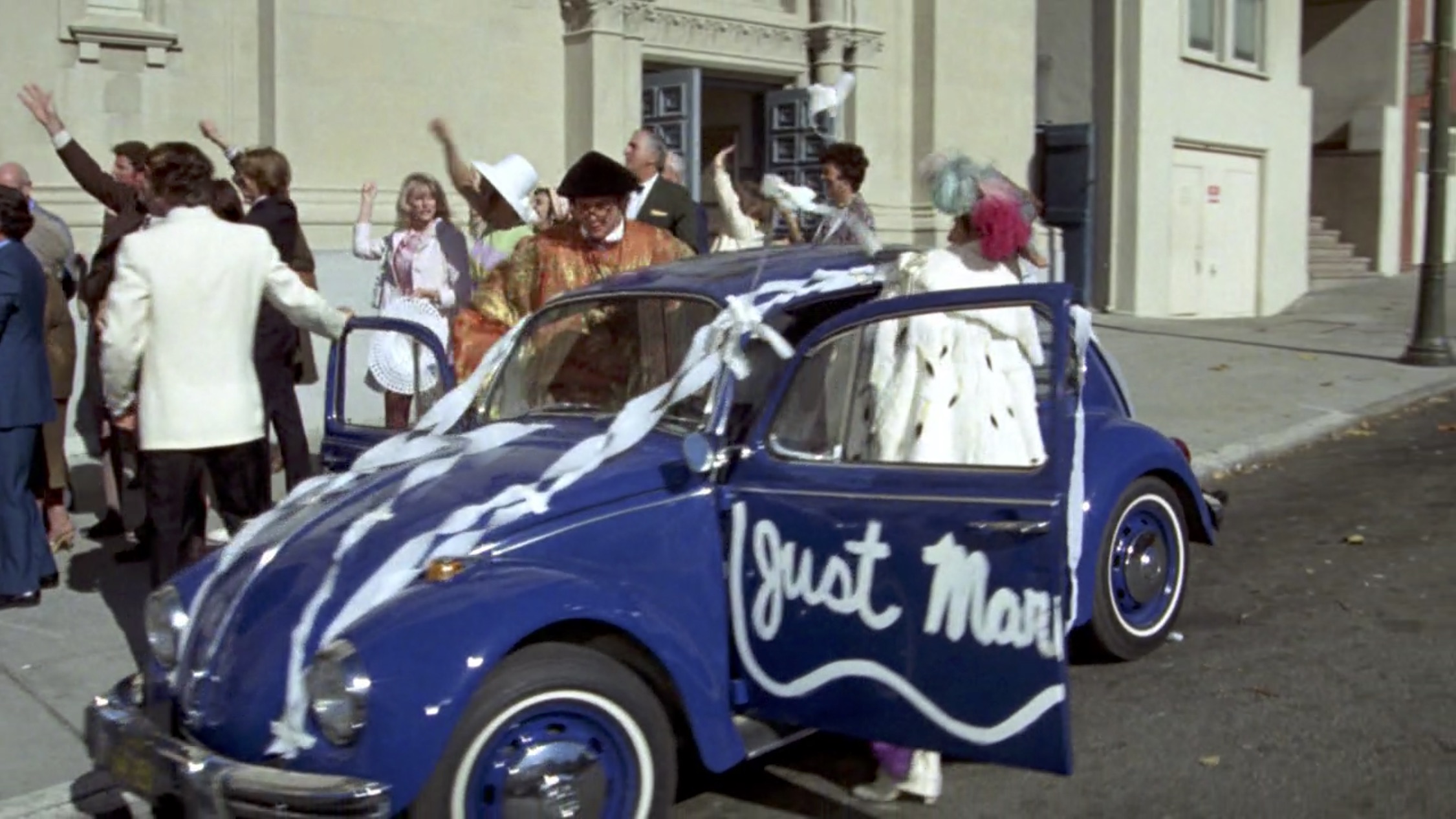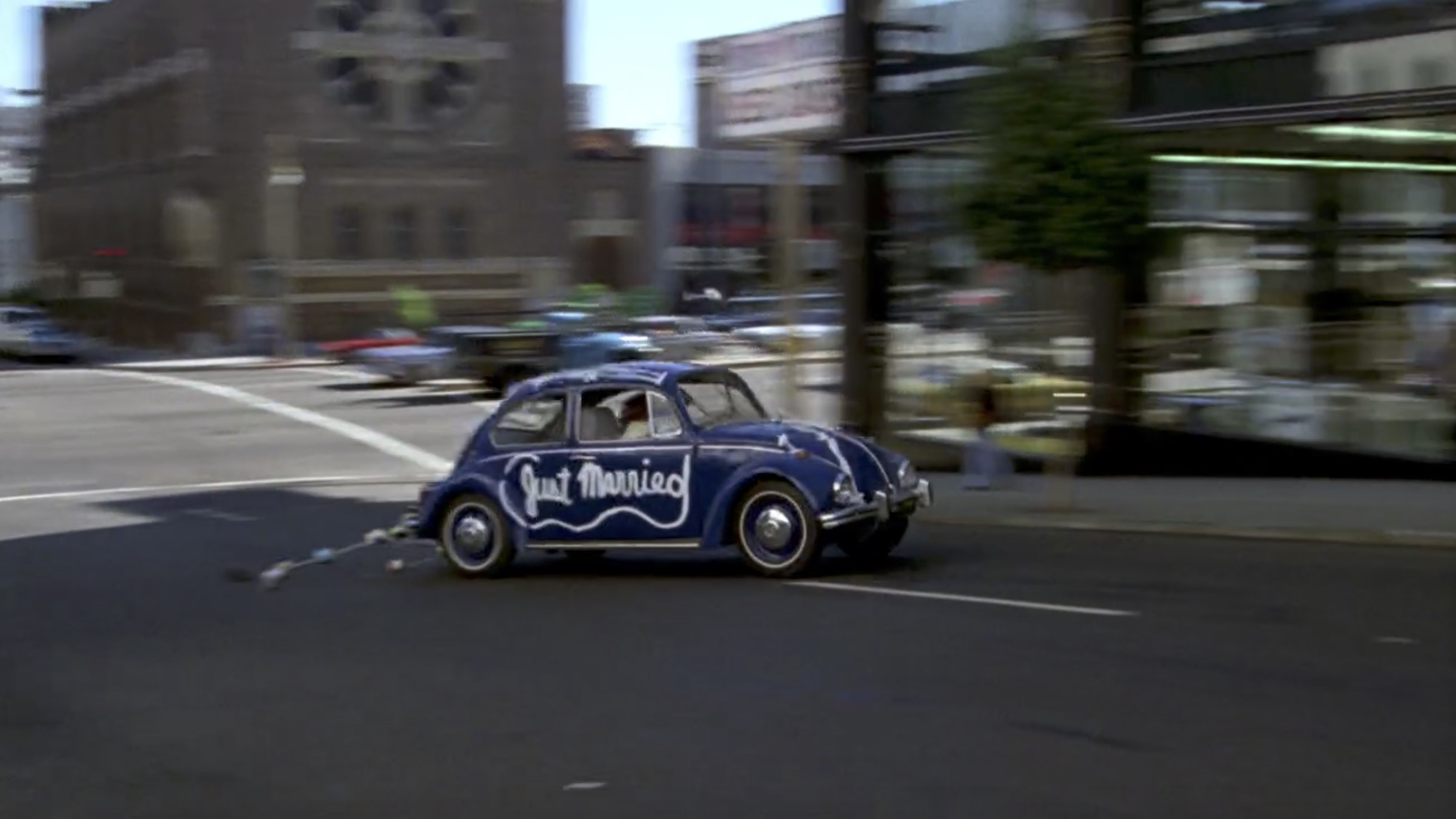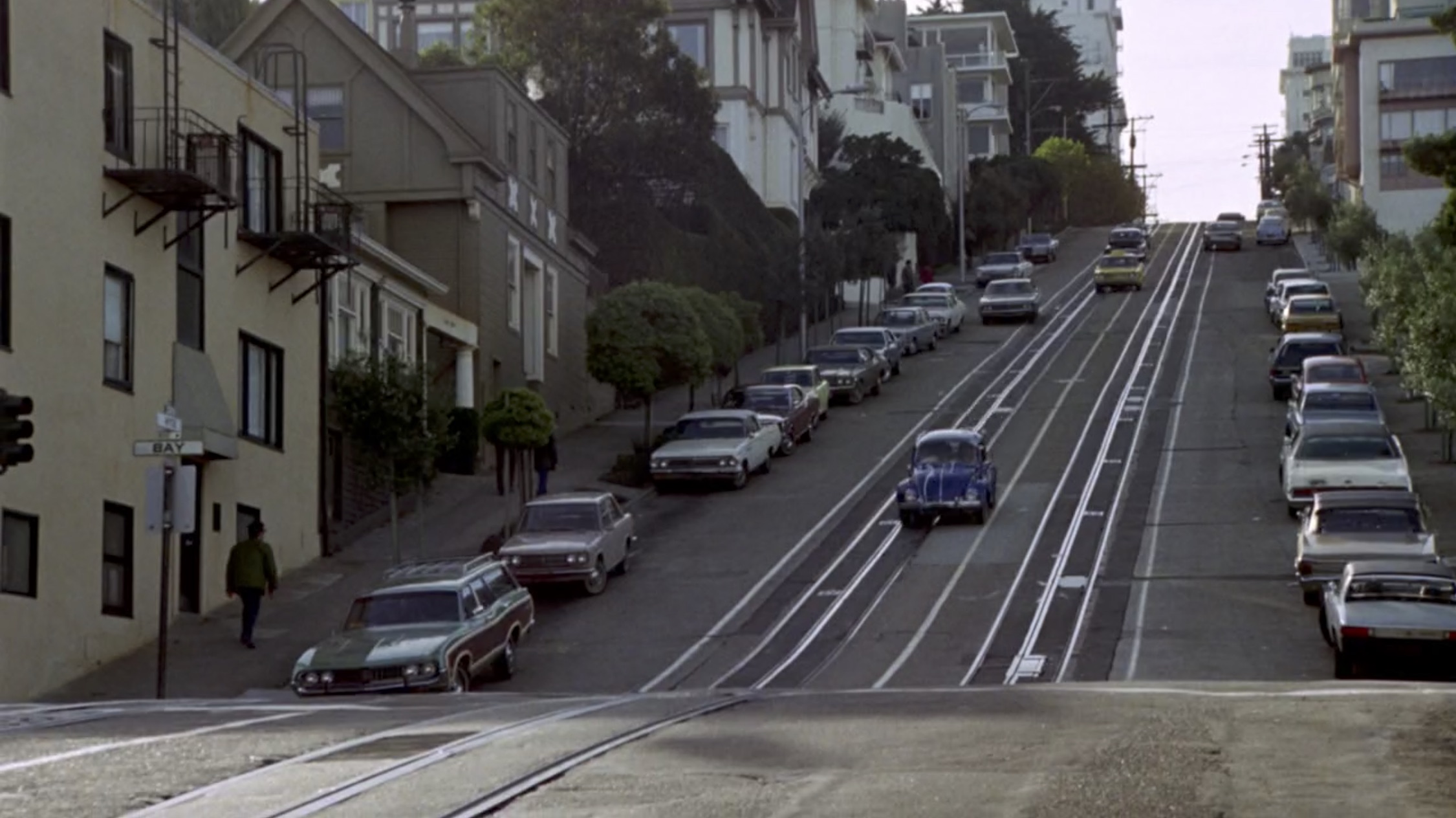What’s Up, Doc? takes the Bullitt chase formula and adds big laughs
Peter Bogdanovich made What’s Up, Doc? on a dare. John Calley, head of Warner Brothers at the time, told Bogdanovich that Barbra Streisand had just seen The Last Picture Show and wanted to make a movie with him. Unfortunately, the studio provided Bogdanovich with script he disliked. When informed about his disapproval, Calley asked, “Well, look, if you had to make a picture with Streisand, what kind of picture would you do?” Bogdanovich said, “Oh, I don’t know. Screwball comedy, something like Bringing Up Baby.” Calley told him go for it, so Bogdanovich did.
In What’s Up, Doc? musicologist Howard Bannister—played by Ryan O’Neal—arrives in San Francisco to attend the Congress of American Musicologists Convention, where he’s angling for a grant from Frederick Larrabee (Austin Pendleton) to fund his research on pre-Paleozoic rocks. His competition is Hugh Simon (Kenneth Mars), an overbearing man with an indeterminate accent. Madeline Kahn plays Eunice Burns, Howard’s strident fiancée, in her debut film role. The mayhem centers around four identical plaid overnight cases, which contain igneous rocks, top-secret files inspired by the Pentagon Papers, expensive jewelry, and a random woman’s things, respectively. Enter Barbra Streisand as Judy Maxwell, the bringer of chaos and havoc, who takes a shine to Howard in spite of his protests.
Howard meets Judy behind a rock in the drugstore. In a day’s time, she rips his suit, renames him Steve, pretends to be his fiancée, and breaks into his hotel room and contributes to its destruction. In all the most important ways, though, she improves Howard’s existence, introducing disorder into his too-tidy life, and single-handedly earning Larrabee’s favor and the grant. Larrabee says, “Foolish consistency is the hobgoblin of little minds,” quoting Emerson in a line that seems to define What’s Up, Doc? Its climactic chase is underrated but hugely influential, the most over-the-top scene in Bogdanovich’s real-life cartoon: they steal a car, wreck a city, end up in the San Francisco Bay, and then in court. It’s the perfect synthesis of action, comedy, and storytelling.




Larrabee throws a party that unites all four overnight cases and every character who’s after them. A fight breaks out, and in the confusion, Judy and Harold take the cases and run, making a getaway on a delivery tricycle. In an homage to Sherlock Jr, Judy pedals while Harold slides all over a metal box mounted on the handlebars. The rest of the cast sets off in pursuit—Eunice, Larrabee, and Hugh are held at gunpoint by the jewel thieves in a 1952 Cadillac Fleetwood 75, and Mr. Smith, who’s stolen the top-secret papers, and Mr. Jones, the spy who’s chasing him, get in a 1969 Cadillac Deville and a 1971 Ford taxi, respectively.
As the chase begins, we see two workers carrying a giant sheet of glass in the crosswalk. They fearfully try to evade the tricycle and its pursuers, who somehow manage to avoid crashing into it. Though Judy and Howard avoid breaking the glass themselves, they set a chain of events in motion that inevitably leads to it. Someone walking into or driving through it would have been a cliche gag, but Bogdanovich subverts expectations. While Barbra Streisand and speeding cars repeatedly threaten the glass, it doesn’t break—until finally, a worker’s ladder gets knocked out from under him. He grabs hold of the “Keep San Francisco Clean Week” banner above him and swings on it like Tarzan on a vine right into the pane.
In an interview at the American Film Institute, Bogdanovich explained that the film’s comedy worked on the “principle of threes”: “You set up something with a laugh, you get another laugh with it, then you top it. There’s a scene where there are cars all making a U-turn and they each smash into this Volkswagen bus which is parked along the curb. Each time it gets a bigger laugh. The topper is when the guy who obviously owns the bus runs out from his house, opens the door of the thing and the whole bus falls over into the street. That’s the big laugh.” If Bogdanovich hadn’t built to the moment when the glass breaks, arguably the chase’s best joke, the gag would have felt trite. And if he hadn’t broken the glass at all, the audience would’ve been disappointed, waiting for a payoff that never came. Bogdanovich said the problem with modern comedy is that “nobody understands the principle of topping a joke.”

Judy’s mere existence seems to generate chaos and slapstick, and the mayhem only multiplies. Everyone drives through wet concrete; Judy and Harold take cover inside a Chinese dragon in a Chinatown parade, which inadvertently causes a seven-car accident at an intersection, which sent an avalanche of trash cans down the street (a nod to Buster Keaton’s Seven Chances), forcing a pedestrian to jump out of harm’s way over a fence and onto a table in the middle of a party. Following that, Judy and Harold steal a VW Bug from a wedding, which is when Judy reveals she can’t drive. In the chase’s finale, Howard realizes too late that they’re headed for the Port of San Francisco. One by one, everyone drives into the water, as seagulls bear witness to the carnage (a shot that took hours to capture). For all the trouble Judy causes throughout the film, she always emerges miraculously unscathed. She also serves as Howard’s good luck charm; in the last shot of this chase, their stolen Bug somehow floats safely on top of the water.
Bogdanovich and his crew were told Volkswagens float, but learned the hard way that this is not true. The VW was the first car in the water, and the stuntman inside had been driving 70 mph without an oxygen tank. The car “went down like a stone, and it was very deep.” The door wouldn’t open, but he managed to escape through the windshield, which had caved in. Bogdanovich said everyone watching was “standing there dying” because it took him about three minutes to finally reach the water’s surface. “John Ford gave me a very good piece of advice. He said, ‘Never rehearse action.’ I said, ‘Why not?’ He said, ‘Somebody could get hurt.’” Bogdanovich followed Ford’s advice and everyone managed to survive the making of What’s Up, Doc? He also recognized his stuntmen’s invaluable contribution, and What’s Up, Doc? was the first Hollywood film to list its stuntmen in the credits. “They were extraordinary,” Bogdanovich said. “The chase was undoable without them.”



The chase participants destroyed parts of San Francisco along the way, sometimes for real—the damage to the steps in Alta Plaza Park still hasn’t been repaired. Bogdanovich said, “We took over San Francisco and wrecked a couple of streets and got in a lot of trouble.” The car chase cost a quarter of the film’s budget (about $6 million) and took a month to film. It remains one of the longest chases in film history, lasting over ten minutes, covering Chinatown, the zig-zag of Lombard Street, San Francisco Bay, and Balboa & 23rd Avenue.
The chase parodies San Francisco’s most iconic chase, Bullitt, with cars leaping over hills and losing rims, but it owes even more to silent films, where the car chase was born. Screenwriter Buck Henry claimed Ryan O’Neal was “playing Peter Bogdanovich playing Cary Grant” in Bringing Up Baby, but both actors were playing Harold Lloyd. Bogdanovich cited that his primary inspiration was Buster Keaton, the godfather of chase scenes, whose influence is unmistakable throughout the film and its action sequences.
Barbra Streisand told Newsday when What’s Up, Doc? came out that she, “hated it with a passion. I thought it was infantile humor.” But Streisand may have been the only person who didn’t love the film at the time—What’s Up, Doc? was a hit, and it remains Peter Bogdanovich’s most popular picture. According to Bogdanovich, people lined up around the block to see it, the theater shook with laughter, and you could hear them across the street. “When I made What’s Up, Doc? I called Cary Grant to tell him that it was opening at the Radio City Music Hall in New York. He told me to stand at the back and listen to 6,500 people laugh at what you did. He was right. It was one of the most exciting experiences I have ever had.”










